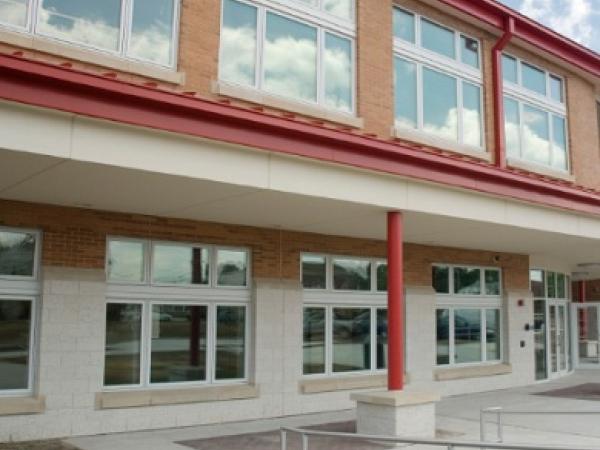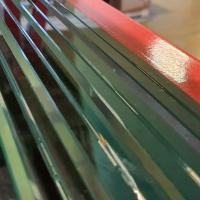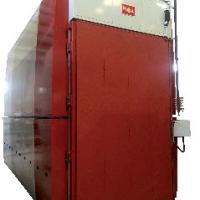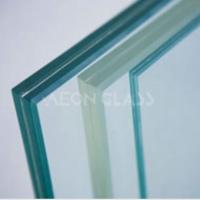Trusted and proven in the most critical applications, Eastman’s protective interlayers, branded as Saflex® and KeepSafe®, are found in nearly 40 percent of all architectural, safety and security glazing worldwide.
Explore the High-Performance Benefits of Laminated Glass
Whether protecting people and property from mother nature or from man made threats, KeepSafe laminated glass featuring Saflex PVB interlayer technology brings strength and security to laminated glazing applications. In safety applications, KeepSafe glass provides around the clock protection from windborne debris in areas prone to hurricane and other natural disasters.
Eastman has a wide range of products to meet or exceed large and small missile criteria requirements of the most stringent hurricane codes. These products are also highly resistant to the dynamic racking motions of an earthquake helping to maintain the integrity of the building envelope and prevent injury and damage from glass fallout.
KeepSafe glass can provide significant protection over monolithic glass products in resisting man made threats. Globally, architects and designers rely on these protective interlayers to help them meet regional standards and norms for bomb blast, ballistics and forced entry applications.
Security Performance
Designing for Security
The desire for living and working in open, sunlit, glass-clad buildings has come face-to-face with the need to assure that building structures provide occupants with optimal security. Properly designed and installed laminated glazing systems made with Saflex interlayers can provide remarkable protection from forced entry, bomb blasts and ballistics.Designing for personal and facility security.
Designing for personal and facility security. Products constructed from laminated glass are referred to as security glazing and are designed to withstand the complex dynamic structural loads resulting from intentional impact or assault. Since burglaries, forced entries or ballistic attacks are often targeted toward the easiest opportunity and lowest perceived risk, the presence of laminated security glazing made with Saflex interlayer may be enough to thwart an attack.
Laminated architectural glazing made with Saflex interlayer provides a significant improvement over monolithic glass products in resistance to forced entry and is capable of passing Underwriters Laboratory Burglary Resistance Test UL 972, ASTM F1233 Standard Test Method for Security Glazing Materials and Systems and EU norms.
Within the glazing industry, security design generally falls into three broad categories: burglary / forced entry, bomb blast, and ballistics. Each category requires special design criteria for glazing systems as detailed below.
Burglary and forced entry and forced exit resistance. In designing to resist burglary or forced entry, the entire glazing system – not just the glass panel – must be designed to withstand an attack. In institutional settings, laminated glass can provide the needed time delay to allow added security or authorized personnel to arrive on scene and adequately address a situation without creating potential danger for other inmates or clients.
Generally, security products with the greatest overall thickness and the largest percentage of Saflex or Vanceva protective interlayers deliver the best resistance to forced entry as required by the American Society for Testing and Materials class rating ASTM F12233 Class I, II and III.
Typically, laminated glass made with Saflex protective interlayers is strong enough to deter and discourage an opportunistic, “smash-and-grab” burglar. Since laminated glass cannot be cut from only one side, even quiet glass cutters become a useless burglary tool. Standard laminated glass made with 1.52 mm thick (0.060 inch) interlayer provides significantly improved resistance to attack from handheld weapons compared to ordinary monolithic glass products – even those that are strengthened.
Ballistic protection. Security glazing incorporating the appropriate configuration of laminated glass made with Saflex interlayers offers effective ballistic protection. Constructed in multiple alternating layers of glass and interlayers, laminated glass has been shown to withstand penetration by high-velocity bullets and reduce injuries from ballistic attack – without compromising the clear-vision benefits of a glass system.
Bomb blast resistance. According to experts, approximately 75 percent of all damage and injury from bomb blasts results from flying and falling glass following an explosion. Security glazing using laminated glass made with Saflex interlayers substantially reduces injury, decreases the extent of damage and the cost to repair targeted and surrounding facilities, and reduces the opportunity for looting.
In new building design or retrofit of existing windows, blast-resistant glazing systems withstand both the initial blast wave from the explosive event as well as debris that may impact the glazing, and reduce or eliminate flying glass to protect nearby non-targeted buildings.
Additional Benefits of Laminated Glass
In addition to the proven safety and security capabilities, KeepSafe glass featuring Saflex PVB interlayers deliver all the other benefits inherent in laminated glass:
- Acoustic: Reducing the transmission of unwanted sound in a building’s environment.
- Solar: Filtering more than 99 percent of harmful UV rays, controlling visible light radiation and reducing heat build-up and thermal stress.
To learn more about windows and doors using KeepSafe laminated glass, visit our website at www.keepsafe.com.
You may also contact us at keepsafe@eastman.com.




























